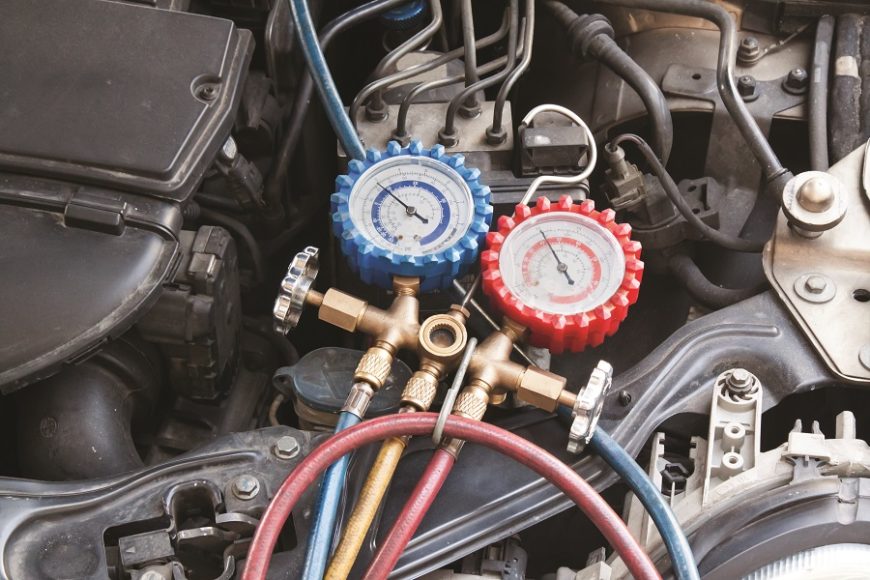When the temperature soars outside, stepping into a car with a well-functioning air conditioner can feel like an oasis in the desert. But have you ever wondered how a car’s air conditioner actually works? Let’s take a closer look at the inner workings of this essential automotive system.

Credit: www.autozone.com
Components of a Car Air Conditioner
A typical car air conditioning system consists of several key components that work together to cool the air inside the vehicle. These components include:
- Compressor
- Condenser
- Expansion valve
- Evaporator
- Refrigerant
- Blower motor
- Ducts
Each of these components plays a crucial role in the overall functioning of the car’s air conditioner.
The Cooling Process
The air conditioning process begins with the compressor, which is typically driven by the car’s engine. The compressor pressurizes the refrigerant gas, causing it to become hot and high-pressure. The hot, pressurized gas then flows to the condenser, located at the front of the car near the radiator.
As the hot gas moves through the condenser, it releases heat and transforms into a cooler liquid state. The liquid refrigerant then travels to the expansion valve, where it undergoes a pressure drop, leading to a significant temperature decrease. This cold, low-pressure liquid enters the evaporator inside the car’s cabin.
As the blower motor forces warm cabin air over the cold evaporator coils, the liquid refrigerant absorbs heat from the air, cooling it in the process. The now-warmed refrigerant returns to the compressor to restart the cycle, while the cooled air is distributed through the car’s vents, providing welcome relief from the heat outside.
Maintenance and Troubleshooting
Like any automotive system, regular maintenance is crucial for keeping a car’s air conditioner running smoothly. This includes checking refrigerant levels, inspecting for leaks, and ensuring proper belt tension and compressor operation. Additionally, cabin air filters should be replaced periodically to maintain airflow and air quality inside the vehicle.
If your car’s air conditioner is not functioning as it should, there are several potential issues that could be at fault. Common problems include refrigerant leaks, compressor issues, electrical faults, or clogged condenser or evaporator coils. It’s important to have any air conditioning problems diagnosed and repaired by a qualified automotive technician to ensure proper functioning and prevent further damage to the system.
Conclusion
Understanding how a car’s air conditioner works can provide valuable insight into the importance of regular maintenance and prompt repairs when issues arise. With proper care and attention, your car’s air conditioner can continue to provide cool, comfortable driving experiences, no matter how high the mercury climbs outside.

